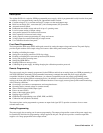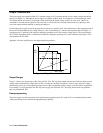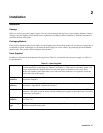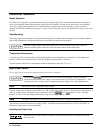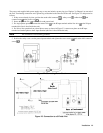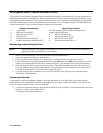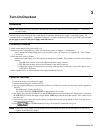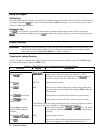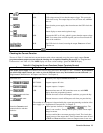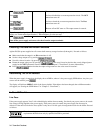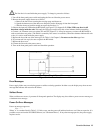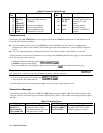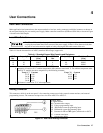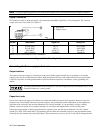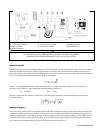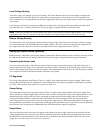
Turn-On Checkout 23
Press
OV 30 Program the OVP to 30 volts, which is less than the output voltage.
Press 0.000 OVP voltage entered is less than the output voltage. This causes the
OVP circuit to trip. The output drops to zero, CV turns off, and Prot
turns on.
Press OV - - - - - Shows that the power supply shuts down because the OVP circuit has
tripped.
Press Return display to meter mode (optional step).
Press
0.000 Program the OVP to 45 volts, which is greater than the output voltage.
Note: You cannot clear an OVP trip until you have first removed the
cause of the condition.
Press Prot Clear
(
)*
40.00
The OVP circuit is cleared, restoring the output. Prot turns off and
CV turns on.
* is the unlabeled blue key.
Checking the Current Function
The tests in Table 3-2 check the basic current functions with a short connected across the power supply output. Do not
program maximum output currents unless the shorting wire is capable of handling the current (see "Supplemental
Characteristics" and Table 4-2). The AMPS display will show various readings. Ignore the VOLTS display.
Table 3-2. Checking the Current Functions (Output Terminals Shorted)
Procedure Display Explanation
Turn off the power supply and connect a #14 AWG or larger wire across the output (+) and (–) terminals. If you intend to
test at full-rated output current, use a wire or wires of sufficient size to carry the maximum current of the unit (see
"Supplemental Characteristics" in Chapter l and Table 4-2 in Chapter 4).
Turn on the unit. Meter mode Essentially zero output with Dis annunciator on.
Press
VOLT 80.00
Program output to 80 volts.
Press
CURR 1.000
Program output to 1 ampere.
Press
1.000 Dis annunciator turns off, CC annunciator turns on, and AMPS
display shows the programmed current.
Press several times
*Current decreases several milliamperes each time you press the key.
Press the same
number of times
*Current increases several milliamperes each time you press the key.
*The number of milliamperes is determined by the current programming resolution of the
power supply (see "Supplemental Characteristics" in Chapter 1).
Rotate the Current control
counterclockwise and then
clockwise
Control operates similarly to the and keys. The
control is rate sensitive. Turning it more quickly causes a more rapid
change in current.
Press
You have enabled the overcurrent protection circuit. The circuit then
tripped because of the output short. The CC annunciator turns off and
the OCP and Prot annunciators come on. Output current is near zero.



